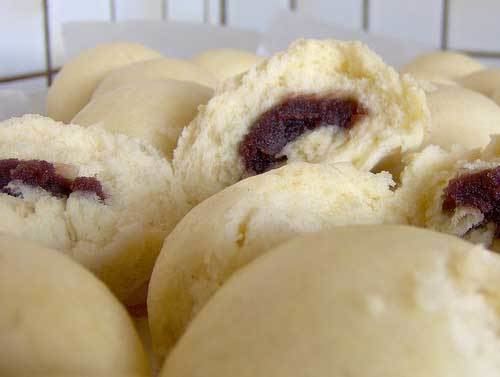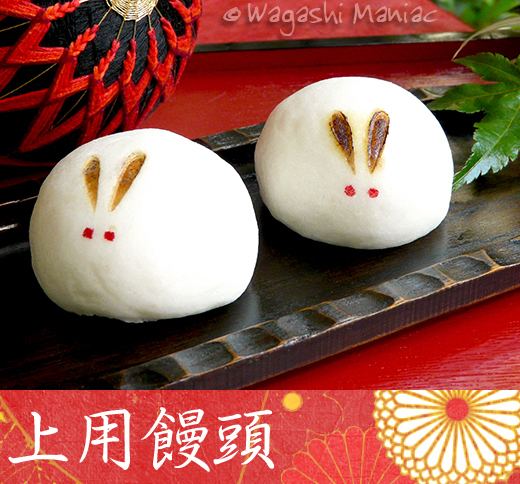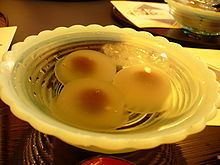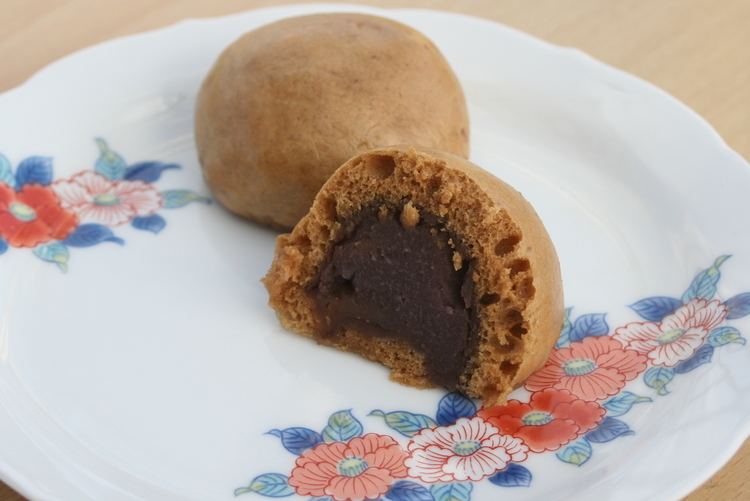 | ||
Similar Wagashi, Sweet bean paste, Daifuku, Mochi, Yōkan | ||
Eating japanese sweets wagashi kuri manj
Manjū (饅頭, まんじゅう) is a popular traditional Japanese confection. There are many varieties of manjū, but most have an outside made from flour, rice powder and buckwheat and a filling of anko (red bean paste), made from boiled azuki beans and sugar. They are boiled together again and kneaded. There are several varieties of bean paste used including koshian, tsubuan, and tsubushian.
Contents

History

Manjū was derived from a type of mochi (蒸餅), or pounded rice cake, that has existed in China for a long time. It was originally called Mantou in Chinese, but became known as manjū when it came to Japan. In 1341, a Japanese envoy that came back from China brought back mantou with him and started to sell it as Nara-manjū. It is said that this was the origin of Japanese manjū. Since then, it has been eaten for nearly 700 years by Japanese people. Now it can be found in many Japanese sweet shops. Its low price is a reason that it is popular.
Varieties
There are myriad varieties of manjū, some more common than others.




